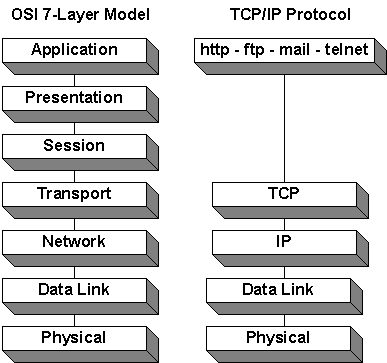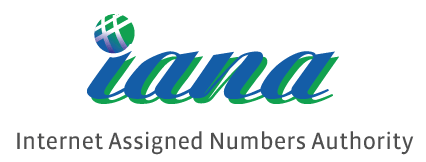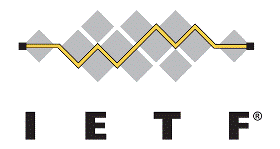Metalogue: How Much Do You Know?
Daughter: Daddy, how much do you know?
Father: Me? Hmm—I have about a pound of knowledge.
D: Don't be silly. Is it a pound sterling or a pound weight? I mean really how much do you know?
F: Well, my brain weighs about two pounds and I suppose I use about a quarter of it—or use it at about a quarter efficiency. So let's say half a pound.
D: But do you know more than Johnny's daddy? Do you know more than I do?
F: Hmm—I once knew a little boy in England who asked his father, "Do fathers always know more than sons?" and the father said, "Yes." The next question was, "Daddy, who invented the steam engine?" and the father said, "James Watt." And then the son came back with "—but why didn't James Watt's father invent it?"
* * *
D: I know. I know more than that boy because I know why James Watt's father didn't. It was because some-body else had to think of something else before anybody could make a steam engine. I mean something like—I don't know—but there was somebody else who had to discover oil before anybody could make an engine.
F: Yes—that makes a difference. I mean, it means that knowledge is all sort of knitted together, or woven, like cloth, and each piece of knowledge is only meaningful or useful because of the other pieces—and . . .
D: Do you think we ought to measure it by the yard?
F: No. I don't.
D: But that's how we buy cloth.
F: Yes. But I didn't mean that it is cloth. Only it's like it—and certainly would not be flat like cloth—but in three dimensions—perhaps four dimensions.
D: What do you mean, Daddy?
F: I really don't know, my dear. I was just trying to think.
F: I don't think we are doing very well this morning. Sup-pose we start out on another tack. What we have to think about is how the pieces of knowledge are woven together. How they help each other.
D: How do they?
F: Well—it's as if sometimes two facts get added together and all you have is just two facts. But sometimes instead of just adding they multiply—and you get four facts.
D: You cannot multiply one by one and get four. You know you can't.
F: Oh.
* * *
F: But yes I can, too. If the things to be multiplied are pieces of knowledge or facts or something like that. Because every one of them is a double something.
D: I don't understand.
F: Well—at least a double something.
D: Daddy!
F: Yes—take the game of Twenty Questions. You think of something. Say you think of "tomorrow." All right. Now I ask "Is it abstract?" and you say "Yes." Now from your "yes" I have got a double bit of information. I know that it is abstract and I know that it isn't concrete. Or say it this way—from your "yes" I can halve the number of possibilities of what the thing can be. And that's a multiplying by one over two.
D: Isn't it a division?
F: Yes—it's the same thing. I mean—all right—it's a multiplication by .5. The important thing is that it's not just a subtraction or an addition.
D: How do you know it isn't?
F: How do I know it?—Well, suppose I ask another question which will halve the possibilities among the abstractions. And then another. That will have brought down the total possibilities to an eighth of what they were at the beginning. And two times two times two is eight.
D: And two and two and two is only six.
F: That's right.
D: But, Daddy, I don't see—what happens with Twenty Questions?
F: The point is that if I pick my questions properly I can decide between two times two times two times two twenty times over things—220 things. That's over a mil-lion things that you might have thought of. One question is enough to decide between two things; and two questions will decide between four things—and so on.
D: I don't like arithmetic, Daddy.
F: Yes, I know. The working it out is dull, but some of the ideas in it are amusing. Anyhow, you wanted to know how to measure knowledge, and if you start measuring things that always leads to arithmetic.
D: We haven't measured any knowledge yet.
F: No. I know. But we have made a step or two toward knowing how we would measure it if we wanted to. And that means we are a little nearer to knowing what knowledge is.
D: That would be a funny sort of knowledge, Daddy. I mean knowing about knowledge—would we measure that sort of knowing the same way?
F: Wait a minute—I don't know—that's really the $64 Question on this subject. Because—well, let's go back to the game of Twenty Questions. The point that we never mentioned is that those questions have to be in a certain order. First the wide general question and then the detailed question. And it's only from answers to the wide questions that I know which detailed questions to ask. But we counted them all alike. I don't know. But now you ask me if knowing about knowledge would be measured the same way as other knowledge. And the answer must surely be no. You see, if the early questions in the game tell me what questions to ask later, then they must be partly questions about knowing. They're exploring the business of knowing.
D: Daddy—has anybody ever measured how much any-body knew.
F: Oh yes. Often. But I don't quite know what the answers meant. They do it with examinations and tests and quizzes, but it's like trying to find out how big a piece of paper is by throwing stones at it.
D: How do you mean?
F: I mean—if you throw stones at two pieces of paper from the same distance and you find that you hit one piece more often than the other, then probably the one that you hit most will be bigger than the other. In the same way, in an examination you throw a lot of questions at the students, and if you find that you hit more pieces of knowledge in one student than in the others, then you think that student must know more. That's the idea.
D: But could one measure a piece of paper that way?
F: Surely one could. It might even be quite a good way of doing it. We do measure a lot of things that way. For example, we judge how strong a cup of coffee is by looking to see how black it is—that is, we look to see how much light is stopped. We throw light waves at it instead of stones, it's the same idea.
D: Oh.
* * *
D: But then—why shouldn't we measure knowledge that way?
F: How? By quizzes? No—God forbid. The trouble is that that sort of measuring leaves out your point—that there are different sorts of knowledge—and that there's knowing about knowledge. And ought one to give higher marks to the student who can answer the widest question? Or perhaps there should be a different sort of marks for each different sort of question.
D: Well, all right. Let's do that and then add the marks together and then .. .
F: No—we couldn't add them together. We might multiply or divide one sort of marks by another sort but we couldn't add them.
D: Why not, Daddy?
F: Because—because we couldn't. No wonder you don't like arithmetic if they don't tell you that sort of thing at school—What do they tell you? Golly—I wonder what the teachers think arithmetic is about.
D: What is it about, Daddy?
F: No. Let's stick to the question of how to measure knowledge—Arithmetic is a set of tricks for thinking clearly and the only fun in it is just its clarity. And the first thing about being clear is not to mix up ideas which are really different from each other. The idea of two oranges is really different from the idea of two miles. Because if you add them together you only get fog in your head.
D: But, Daddy, I can't keep ideas separate. Ought I to do that?
F: No— No— Of course not. Combine them. But don't add them. That's all. I mean—if the ideas are numbers and you want to combine two different sorts, the thing to do is to multiply them by each other. Or divide them by each other. And then you'll get some new sort of idea, a new sort of quantity. If you have miles in your head, and you have hours in your head, and you divide the miles by the hours, you get "miles per hour"—that's a speed.
D: Yes, Daddy. What would I get if I multiplied them?
F: Oh—er—I suppose you'd get mile-hours. Yes. I know what they are. I mean, what a mile-hour is. It's what you pay a taxi driver. His meter measures miles and he has a clock which measures hours, and the meter and the clock work together and multiply the hours by the miles and then it multiplies the mile-hours by something else which makes mile-hours into dollars.
D: I did an experiment once.
F: Yes?
D: I wanted to find out if I could think two thoughts at the same time. So I thought "It's summer" and I thought "It's winter." And then I tried to think the two thoughts together.
F: Yes?
D: But I found I wasn't having two thoughts. I was only having one thought about having two thoughts.
F: Sure, that's just it. You can't mix thoughts, you can only combine them. And in the end, that means you can't count them. Because counting is really only adding things together. And you mostly can't do that.
D: Then really do we only have one big thought which has lots of branches and lots and lots of branches?
F: Yes. I think so. I don't know. Anyhow I think that is a clearer way of saying it. I mean it's clearer
than talking about bits of knowledge and trying to count them.
* * *
D: Daddy, why don't you use the other three-quarters of your brain?
F: Oh, yes—that—you see the trouble is that I had school-teachers too. And they filled up about a quarter of my brain with fog. And then I read newspapers and listened to what other people said, and that filled up another quarter with fog.
D: And the other quarter, Daddy?
F: Oh—that's fog that I made for myself when I was trying to think.












































